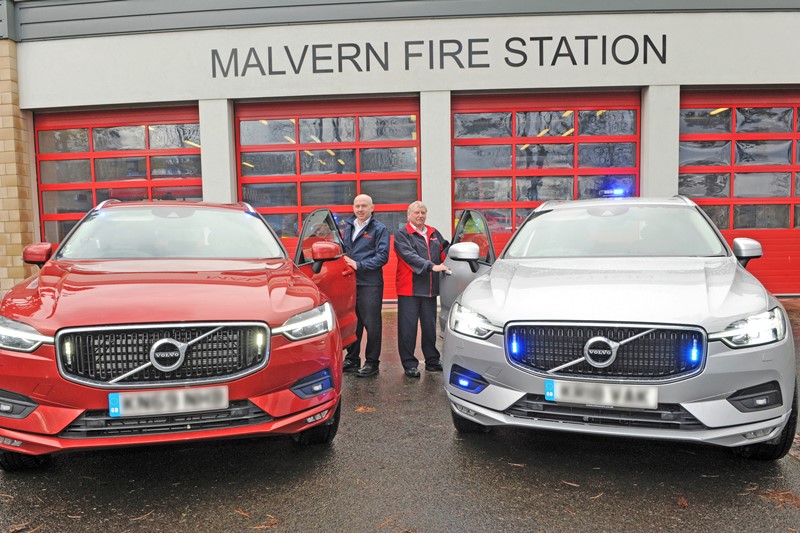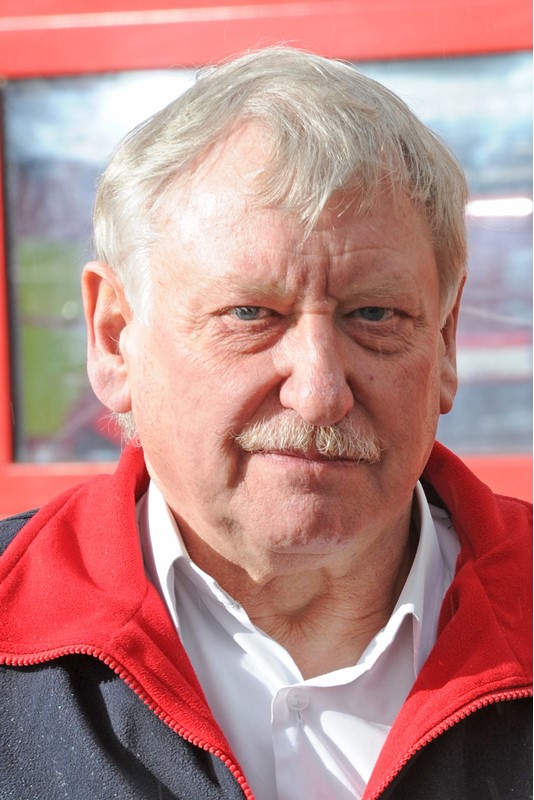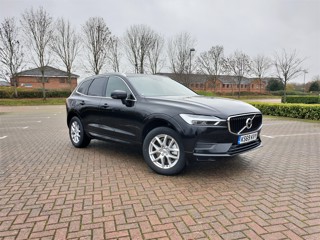Collaboration is gathering pace among the emergency services. Police fleets have been the trailblazers, working together on procurement and framework tenders for years through their national association. Some, such as Kent and Essex Police and Police Scotland, have gone as far as formally joining ‘forces’ to create a single fleet.
Examples are scarcer among the ambulance and fire services, although South Yorkshire Fire and Rescue’s joint partnership agreement signed in 2018 with South Yorkshire Police resulted in a merged fleet operation.
Nestled up against the Welsh border are two fire and rescue fleets that have been quietly working together on procurement projects for the past couple of years.
Hereford & Worcester Fire and Rescue Service (H&W) and Shropshire Fire and Rescue Service spotted an opportunity to boost efficiencies and save money on their fleets by identifying vehicles that could be jointly specified and, therefore, jointly tendered.
It started with a recognition that both organisations needed to address environmental and air quality concerns by finding low emission vehicles to incorporate into their fleets.
 Exploratory work carried out by H&W resulted in a joint deal with Volvo to supply the latest XC60 4x4 response cars in three batches from 2018 to 2020, the latest being the new mild hybrid versions. Both organisations saved back office resource, administration time and, of course, budget.
Exploratory work carried out by H&W resulted in a joint deal with Volvo to supply the latest XC60 4x4 response cars in three batches from 2018 to 2020, the latest being the new mild hybrid versions. Both organisations saved back office resource, administration time and, of course, budget.
So far, H&W has taken 36 cars, Shropshire 23. They provide support to their emergency response officers. But hybrid is just the first step in the collaboration, according to H&W transport manager Jeff Dickson.
“We are both looking at cleaning up our act. The next cars we get may be plug-in hybrid,” he says. “We can’t go full electric yet because many of our cars do a couple of hundred miles a day. But fully electric-powered fire engines are on the horizon with London Fire and Rescue Service having the first UK-built electric truck in build now.”
Dickson’s counterpart at Shropshire, vehicle contracts manager Martin Barclay, is similarly keen to reduce fleet emissions and points to an electric fire engine already in use in Los Angeles as evidence that progress is being made.
Back in the UK, the London Service’s prototype electric Volvo truck, being built by Emergency One in Scotland, will drive on electric and has enough charge to pump water for four hours before the diesel unit kicks in.
“We will buy the cleanest trucks we can get,” Barclay says, “but it has to be viable on cost. We can invest £250,000 for an appliance and after 15 years we sell it for £3,000. There isn’t much of a market for second-hand fire engines!”
However, he’s mindful that the tightening rules on ultra-low emission zones will force compliance, and there’s no exemption for the fire services.
“We have to comply to the same regulations,” he says. “But it will probably be four or five years before we can get electric fire engines.”
Electric cars are an entirely different proposition. Although the current use case is limited, Shropshire has added three Hyundai Kona electric models into its pool fleet, one with the long-range 64kWh battery, two with the 39kWh unit.
“We found that the 39kWh cars can be lacking in range, especially in winter,”Barclay says. “We’ve now placed an order for two new Renault Zoe EVs with the extended range.”
Drivers were initially reluctant to test them, but once behind the wheel “they would’ve bought the cars off us,” Barclay quips.
The Konas are booked online, with a two-week waiting time such is the level of demand. The fire service also invested in charge points at around half its 23 stations, making it the biggest network provider in the county. They are open for public use and proving highly popular.
Charge points
The investment was a perfect example of forward planning. The charge points were installed by Hereford & Worchester Fire and Rescue at stations that had cabling installed during refurbishments five years ago.
“We pre-empted the introduction of electric vehicles – we already saw the direction of travel with the (Nissan) Leaf,” Barclay explains.
Both services decided to switch from contract hire to outright purchase when procuring the hybrid XC60s (H&W already used a mix of the two funding methods).
For Barclay, it was a taxation decision that also offered increased flexibility, supported by a four-year breakdown and recovery agreement, four-year warranty and parts/labour discounts under the joint service level agreement (SLA).
“We consider it to be better value, particularly when we de-fleet the vehicles,” he says. “We can also take advantage of the current market – if new technology, such as electric vehicles, appears, we can extend or reduce the operating cycle of the Volvos to take advantage.”
The ease with which the two fleets began collaborating helped pave the way for a more wide-ranging strategic alliance between the fire services introduced late last year. For Dickson and Barclay, it will bring together risk management procedures and procurement which will lead to even closer collaboration on vehicles and their specifications.
There are caveats, though. It remains difficult to completely match fire engines due to differences in breathing apparatus and other equipment, but the alliance will result in greater standardisation across both fleets.
Collaboration isn’t limited within the two fire services, however. Both H&W and Shropshire buy their pool cars – 20-25 per fleet – via the national police and Crown Commercial Services frameworks. Cars tend to be estates, increasingly 1.0-litre petrol Vauxhall and Ford models for the lower emissions.
“We benefit from the police volumes that drive down the price,” says Barclay,” although the trade-off is having less control about what wins the tender.”
H&W and Shropshire operate one workshop apiece, as well as mobile maintenance vans.
Shropshire’s facility priorities the red fleet and operational equipment – “where the biggest risk is” – while the Volvo XC60s go to the franchised network under the joint SLA. The support vehicles, including cars, minibus and vans, which Barclay calls his ‘grey’ fleet, are serviced at the police workshop in Shrewsbury.
This arrangement used to be replicated at H&W, but it recently brought maintenance on its support vehicles in-house.
“The police used to do some of our fleet, and it was good value cost-wise, but logistically it’s easier to manage in-house,” Dickson says. “And we had the capacity.”
Both fire services invest heavily in mechanic/technician training as part of their holistic safety regime, and this is another area where collaboration could save money. They are in talks with West Midlands Fire Service on a partnership deal which could cut the cost of training in half, from £8,000 to £4,000 per mechanic.
Maintenance schedule
H&W operates a 12-week maintenance schedule, with three inspections taking place at the station and one major service a year in the workshop. They are supported by two mobile vans which run 24/7 in a crucial role.
“To bring a vehicle in for a service, we have to give them another vehicle and that can take two mechanics around half a day to change the equipment over,” says Dickson. “The mobile vans mean they can stay on the road.”
Regular servicing is critical to minimise the risk of failure, which is potentially high due to the inconsistent nature of the job.
Fire engines tend to operate short journeys in low gears within a 10-20-mile radius of the station, continuously weighted at 13-15 tonnes. Some can do more than 20,000 miles a year; others less than 10,000. A busy engine might handle in the region of 75 jobs per month while some at rural stations do far less.
And these 18-tonne vehicles have to be reliable over a 15-year lifespan.
The safety regime also considers the level of equipment in the vehicles. Stability control, autonomous braking and lane departure warning is now standard on the fire engines, with a full set of airbag suspension.
Like many bluelight services, driver training sits in a separate department. Some of the emergency vehicles have telematics but it isn’t continuously monitored for driving behaviour because of the low mileage, high speed journey profiles – measuring g-forces and fuel consumption (typically 4-6mpg because of stationary operations) offers few benefits.
However, the data is retrieved for incident investigation and provided to the training department for coaching purposes.
Telematics is complemented by a six-camera CCTV system offering 360-degree coverage. Currently on 10% of the frontline fleet, the cameras will be standard for future purchases.
“They protect our drivers from being blamed for car damage, such as broken wing mirrors – we can now prove their innocence,” says Dickson. “They also make a huge difference on accident investigation and insurance claims.
“We used them a lot at Durham (Dickson’s former role – see below) and the police often asked us for footage. It reduced the number of claims and easily paid for itself, while also resulting in lower insurance premiums.”
Barclay adds: “We are working with Zurich, which has done a fleet risk analysis, including our training department, workshop qualifications, maintenance regime, auditing and vehicle safety equipment, and that reduced our risk rating. We’ve only just done it, so we haven’t established the saving yet.”
The two services’ latest fire engines are installed with Emergency One’s E1 Fleet system for diagnostics, enabling the workshop to dial in remotely to identify any potential faults with the vehicle or even adjust and upload operational parameters or recalibrations. It also provides data on the level of water in the tank and pump usage, as well as vehicle location.
Vehicle and equipment standardisation among the fire and rescue services has historically been confined to a single region, but there is now a growing number of organisations crossing county boundaries to collaborate, with the likes of H&W and Shropshire showing what’s possible.
“This will happen more,” says Dickson. “It’s good practice – we can learn from each other and work together on new projects. Everyone benefits.”
This interview was carried out before thecoronavirus lockdown.
Spotlight on ...
...Managing uptime
Keeping fire engines on the road and ready for use is the absolute priority for the two fire services.
In addition to robust maintenance schedules and proactive preventative maintenance with remote diagnostics systems, a number of other processes are employed.
* Vehicles are checked by crews twice a day at change-over with any defects reported to the workshop via email and turned into a job sheet.
* Every three years, the main batteries are replaced. Failure rates tend to be between three and four years.
* The fire services have moved to LED headlights where available with protectors and have added mirror protectors to prevent them smashing if hit (a common problem for all heavy vehicle operators).
* The vehicles have battery guard protection equipment for the auxiliary systems which keep the batteries charged. If the voltage falls below 24 volts, the system switches off all the consumables to prevent further drainage. When the crew hits a button, everything starts up. The system also alerts the crew when it reaches 24.5 volts so action can be taken.
... new water features
Hereford & Worcester and Shropshire Fire and Rescue Services are both committed to continuously improving the design of their fire engines.
One of Martin Barclay’s priorities has been to increase the water tank capacity, which, historically, held 1,800 litres.
“With fewer fire hydrants available in certain areas, it is important for the fire engines to carry as much water as possible,” he explains.
The previous design used aluminium bodywork with a separate interior water tank. The two fire services are now building appliances with a 3,000-litre water tank by improving the bodywork design with co-polymer reinforced bodies, so the tank becomes part of the bodywork.
Barclay is writing a spec based on the 3,000-litre tank design, initially for three vehicles with an option to extend to five.
“We will also have an option to split the tank with 2,000 litres of water and 1,000 of foam, improving the operational resilience of the fleet by having combined vehicles rather than one separate foam vehicle,” he says.
Men of experience
 JEFF DICKSON will retire for the second time in September after 51 years in the trade.
JEFF DICKSON will retire for the second time in September after 51 years in the trade.
He has been with Hereford and Worcester (H&W) for the past two-and-a-half years, and before that spent eight years at Durham & Darlington Fire and Rescue.
“I retired after Durham and moved to Herefordshire,” he says. “I only came in (to the station) for a coffee because I knew the old transport manager – but I was persuaded to come back!”
The needs of the two have inherent differences – but it’s still a fire service with fire trucks and associated equipment so there is plenty of commonality, too.
Also universal are the workshop facilities, an area Dickson knows well. He spent 18 years as a heavy goods mechanic and ran a workshop for an ambulance service for another 13 years.
He also spent time at Newcastle airport as maintenance controller looking after 600 pieces of kit.
“That’s where I first came across electric vehicles – we had a lot at the airport,” he says.
“These are the things that keep the job interesting, the way technology progresses.”
 MARTIN BARCLAY started as an apprentice mechanic at an international haulier working on everything from LGVs to trailer fridge units and forklifts, a role he stayed in for 10 years.
MARTIN BARCLAY started as an apprentice mechanic at an international haulier working on everything from LGVs to trailer fridge units and forklifts, a role he stayed in for 10 years.
After this, he moved to a Volvo truck dealer and, during a 10-year stay, progressed through the ranks to team leader.
Then came a move to a local Renault car dealer for a couple of years.
This varied background gave Barclay the skills for a job at a fire service, and he started as a mechanic at Shropshire Fire and Rescue Service in 2003, moving to workshop supervisor in 2009 and then to his current role of vehicle contracts manager in 2012.
“The job satisfaction is second to none in a fire service, you feel you’re adding real benefits to the community by helping keep them safe,” he says.
He has undergone several training courses to build his knowledge, including FTA Fleet Manager qualifications, risk, people and contract management courses and the International transport manager CPC.
A priorityis to replace outgoing vehicles with EVs “if appropriate – i.e. a vehicle that returns to base with sufficient range to be used again without an extended recharge”.



















Login to comment
Comments
No comments have been made yet.